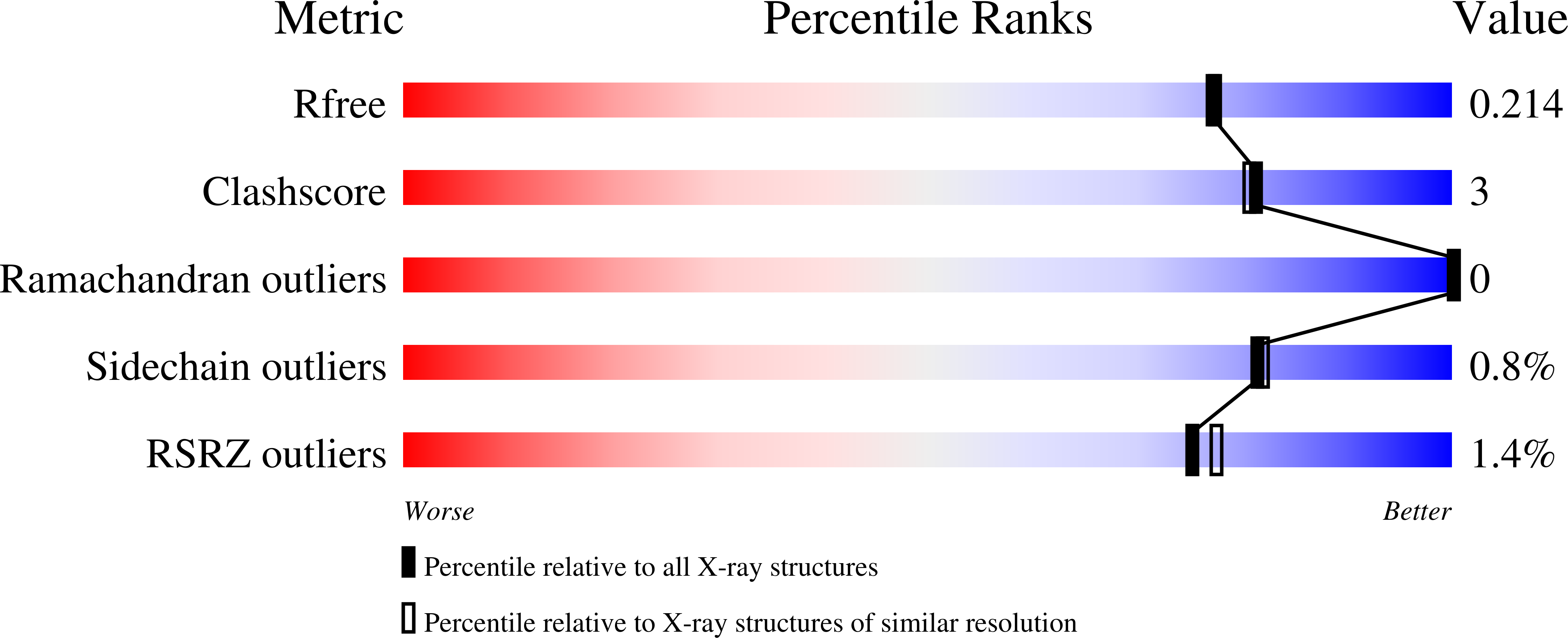Crystal Structure of the Siderophore Binding Protein BauB Bound to an Unusual 2:1 Complex Between Acinetobactin and Ferric Iron.
Bailey, D.C., Bohac, T.J., Shapiro, J.A., Giblin, D.E., Wencewicz, T.A., Gulick, A.M.(2018) Biochemistry 57: 6653-6661
- PubMed: 30406986
- DOI: https://doi.org/10.1021/acs.biochem.8b00986
- Primary Citation of Related Structures:
6MFL - PubMed Abstract:
The critical role that iron plays in many biochemical processes has led to an elaborate battle between bacterial pathogens and their hosts to acquire and withhold this critical nutrient. Exploitation of iron nutritional immunity is being increasingly appreciated as a potential antivirulence therapeutic strategy, especially against problematic multidrug resistant Gram-negative pathogens such as Acinetobacter baumannii. To facilitate iron uptake and promote growth, A. baumannii produces a nonribosomally synthesized peptide siderophore called acinetobactin. Acinetobactin is unusual in that it is first biosynthesized in an oxazoline form called preacinetobactin that spontaneously isomerizes to the final isoxazolidinone acinetobactin. Interestingly, both isomers can bind iron and both support growth of A. baumannii. To address how the two isomers chelate their ferric cargo and how the complexes are used by A. baumannii, structural studies were carried out with the ferric acinetobactin complex and its periplasmic siderophore binding protein BauB. Herein, we present the crystal structure of BauB bound to a bis-tridentate (Fe 3+ L 2 ) siderophore complex. Additionally, we present binding studies that show multiple variants of acinetobactin bind BauB with no apparent change in affinity. These results are consistent with the structural model that depicts few direct polar interactions between BauB and the acinetobactin backbone. This structural and functional characterization of acinetobactin and its requisite binding protein BauB provides insight that could be exploited to target this critical iron acquisition system and provide a novel approach to treat infections caused by this important multidrug resistant pathogen.
Organizational Affiliation:
Department of Structural Biology , Jacobs School of Medicine & Biomedical Sciences at the University at Buffalo , 955 Main Street , Buffalo , New York 14203 , United States.

















